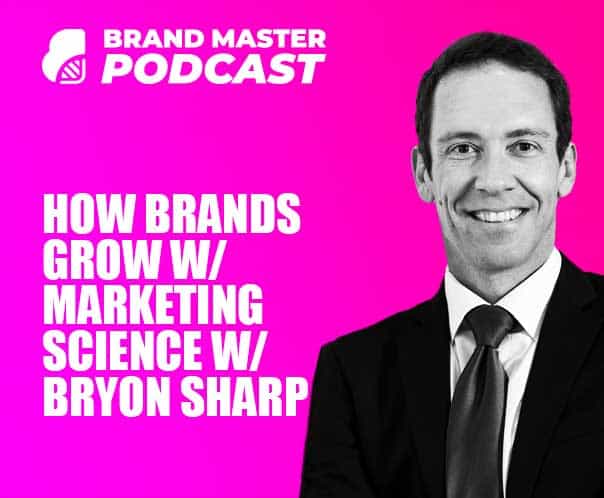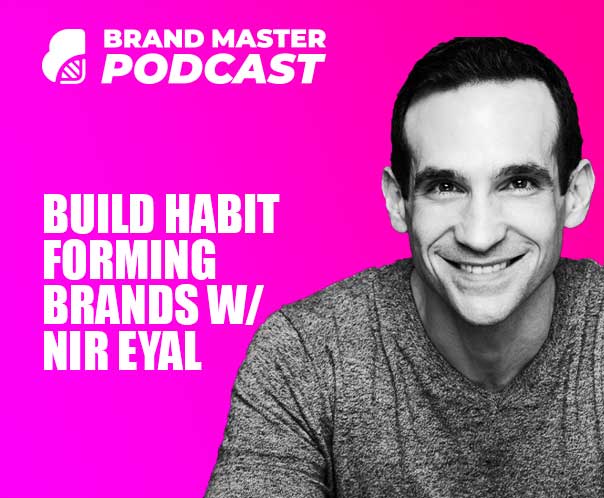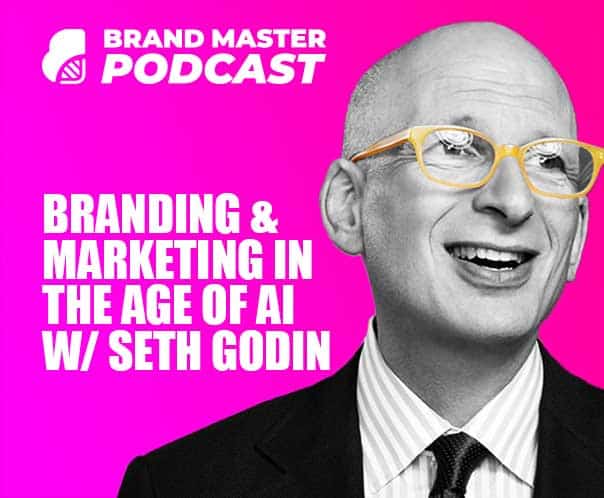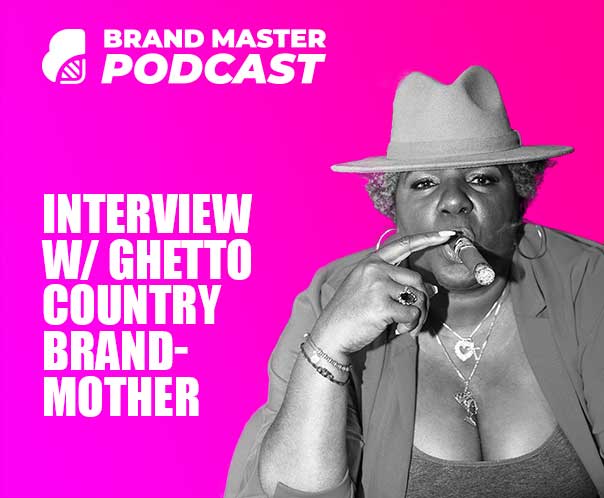Now David Acker is a Brunning veteran on pioneer and once hailed as the father of modern branding,
David has authored no fewer than 17 books on branding and marketing, including classics, such as building strong brands, and Aaker on branding.
In 2015, he was introduced into the American marketing association hall of fame for his lifetime achievements in marketing and David opens up about
What Brand Awareness Is And How To Achieve It
How To Create Modern Signature Brand Stories
And 3 Actionable Tips For Brands To Get Ahead In Modern Markets
So if you want to learn from a true legend in branding about how to strategically build brands using modern techniques, then stick around for this article.
Business Strategy vs Brand Strategy

Stephen Houraghan
Well, you were teaching strategy more so at that time from a business point of view.
So from your perspective on your philosophy, what is the difference between business strategy and brand strategy?

David Aaker
Well, there are sort of complementary,
The brand strategy is really the face of a business strategy and a business strategy is enabled by a brand.
You can only go far with a business strategy unless you have a brand to support it.
So they have to work together.
The Evolution Of Branding From Marketing

Stephen Houraghan
In terms of what you said before about loyalty being so important. A lot of people would speak about awareness and an image, but really loyalty is the holy grail of branding.
Now going back, you know, 40 years the way marketing was taught in universities was tha you know, branding was this subset of marketing?
And now it seems that the brand has become the entity and the brand now dictates so much more about the business than just the marketing side of things.
How have you seen the evolution of branding from a subset of marketing that it once was to where it is?

David Aaker
The evolution of branding from marketing really changed everything, It’s changed business, It’s changed culture, It’s changed organizations
Brand management started in the 1930s around 1932, P&G wrote a memo saying what a brand team should do because he wanted to hire one.
He was a brand manager for Brandon in soap or something and he wanted more people and they asked him why.
Why he wrote a three page manual, despite the fact that Procter and gamble, you could only write one page at the time, but that same person went on to become a secretary of defense later and a president of P&G.
So it was a very successful career, but his idea was what you do is you look at data, find out weak spots in the market share trend, and you really jump in with some promotions or pricing or improve distribution to correct those problems and that was what brand management was.

Well, if you flash forward to brand equity times, it’s no longer a what’s, how are we going to.
Crack the sales, the client this week, but whether it’s, you have a time horizon 1, 2, 3 years, and you’re dealing with entirely different variables, dealing with strategic variables, you’re dealing with the composition of a product or service you’re dealing with a brand experience and so on.
So you’re in assault tied to business strategy. Now it’s not tactical or the business strategy in the past it’s the business strategies on the table and who does it changed?
It used to be that the brand was done by several levels below the chief marketing officer, it was tactical and the chief marketing officer didn’t even pay much attention about it.
Somebody else was looking, checking the data and so on. Now the marketing has a seat at the executive table. He’s a vice president of marketing or the COO and he’s part of the executive team.
So he’s intimately involved in strategy and he’s contributing a strategy because he has access to customer insights.
He’s got access to the market trends and to forces within the marketplace. So it’s very different and of course, the impact of perceptions on.
PRO Brand Strategy BluePrint
Build Brands Like A Pro Brand Strategist

How To Achieve Brand Awareness For Small Businesses

Stephen Houraghan
So much has been learned in the last 10 or 20 years through neuroscience as well about how decisions are made, it’s just become so much more that people have become so much more aware of the power of branding and what those perceptions do.
So the business strategy has always been important, but now the brand strategy is up alongside it because people understand the importance of those perceptions.
We touched a little earlier on brand awareness, but in terms of practically dvice because a lot of small brands or small businesses, that’s their first port of call.
They want to achieve that brand awareness.
They want to get some traction in the market.
What would be some steps that business could take to first achieve some kind of awareness in the market. and what then are the benefits of that and how can they springboard off that?

David Aaker
I advocate that trying to understand what they want their brand to stand for and I have what I call the brand identity model.
I know its not like brand vision model, but it’s really asking you a question.
How do I want my brand to be perceived?
But what are the pillars? what are wiithin all those colors, and there was, might be eight or 12 of which are the most important.
How could I make sure that some combination of those pillars create differentiation.
They resonate with the target audience and there’s something I can deliver and so those are the three things you’re looking for.
If you’re not there yet, you either have to have a program in place to get there, or you have to back away because you don’t want to put out something you can’t deliver. That’s the first step
The second step is to take those pillars and position your brand by getting people to look at their choice in those eyes.
If you’re lucky you create a whole new sub-category of your own, where you’re a dominant brand by creating a unique set of features or benefits or personality or values or something.

Then you’re either first to which is unlikely or other people have considered it and decided it wasn’t viable.
So you really do want to find some competitors, but not too many.
That’s somewhere in the 10 to 200 range and then the same thing for prospects.
You want at least 2000 prospects.
Now I’m talking about professional services here, not products or anything.
If there are more than 10,000 prospects, you probably need to narrow it a little bit more.
The fourth thing I’d say is this kind of relieves a little bit of that pressure in your mind, that focusing is really about the work that you are publicly going to seek.
It does not control the work that you accept privately.
So you can still take some of this work, especially during that awkward transition, where you’re a total unfocused generalist down the road, you want to be very focused specialist
So don’t be afraid of not having food on the table because you can’t work with this client.
It’s just when it comes to your positioning, your messaging, you should focus that these are particular at businesses that you want to be known for, is pretty much what you speak about.
Explore Brand Strategy
Programs & Tools
The Importance Of Brand Messaging

Stephen Houraghan
When I read your books we talk a lot or you reference a lot, the kind of bigger brands of the world.
I think the smaller brands now are starting to catch up a lot more in terms of the importance of brand strategy.
Certainly the small business owners, they understand a lot about brand strategy, generally, business owners understand a lot more of that brand strategy and relevance as well as being completely different than changing the category or creating subcategories.
Often it’s, it’s about really connecting with who the person is, the type of personality they are, that the attributes that they have through the messaging of the brand.
How important is that messaging to make sure that it hits the right person in the right way?

David Aaker
Well, it really depends on the product class and within that the brand itself.
It depends upon what kind of personality it’s able to express
What kind of values lie behind it?
What kind of people are behind the organization, especially with a service or a B2B business, people are really making a relationship with a company, not a product.
And they want to know about that product that shares its values and so forth.
It really depends on the brand personality for some brands and some situation is really important for others.
What Is Brand Storytelling?

Stephen Houraghan
I got into the topic because my daughter, Jennifer was teaching a course on stories at Stanford and I kept dialoguing with her, I said, what is not a story?
Because you ask people for their brand story, they’ll give you five bullet points of some facts and benefits and that’s not a story.
I mean, that’s not the signature story.
That’s what the phrase I developed because the Cindy’s story is a narrative. It’s a once upon a time that something happened or some person or some organization or something and, it turns out that the stories are just such powerful communicators.
I mean, right now we have such information overload, such media cutters, such a perceived sameness in an offer instead.
People just basically turn it off, they don’t let themselves get exposed. and if they do, they greet whatever’s, there was skepticism and cynicism and they counter-argue.
So how do you break through that?

David Aaker
And the answer is stories because stories, first of all, I tried to tension, If somebody says I got a story to tell your ears, Yeah, and you listen to it and then while you’re there, you get involved, you don’t come to argue what I’m saying but you just listened to this.
You don’t argue with a story and then what often happens in the stories is you discover some quality of the brand that nobody is telling you that our brand is so great because you discovered it yourself and that’s the way to learn and remember.
There’s all kinds of studies and it turns out that if you can embed a message in a story or have the story to motivate some message or have the message in the story illustrates some message.
It is an order of magnitude more effective, not 20%, but 200%.
It’s just quite remarkable.
What Is A Signature Story?

Stephen Houraghan
Now you’ve defined brand story and a way to activate story is a brand’s signature story.
So what is a signature story?
Can you give us one or two examples of a signature story?

David Aaker
A signature story is first of all, narrative, it’s a once upon a time narrative
Second of all, it’s authentic and it’s engaging and it has kind of a wow factor.
That means that when you hear the story, you just don’t go to sleep, or you just don’t pass it by, but you’re motivated to say, this really is something I should share it with somebody.
It really makes an impact on you, it really pops and there are all kinds of ways to get that quality.
It should be entertaining,
It can be humorous.
It can be informative.
It can be emotionally involving
it can be engaging.
So there’s a lot of avenues to create that thing but it’s something that just pops out at you.
One of my favorite stories is that of life, boy in India
First of all, it started in 1880, there is a soap to help you avoid disease and there was a color evident epidemic in London at the time
Ever since then, it’s been they were trying to get people to wash their hands to be less sick, less subject to disease.
So they started this program in India to cope and get people to wash their hands.

About six, seven years ago, they said, well, this isn’t doing that great. We could do better than this. So they sat down with a bunch of top creatives and their agency and the brand people.
For a couple of days they came up with the idea that they needed to elevate the program and they needed to brand it and they branded a help,
A child reach five because 2 million kids under the age of five die each year, mostly from diseases that can be reduced by washing your hands.
The thing started to took off and they put the new program in three villages, made a video of a person in that village that was affected by the program, a mother, a grandfather, and a daughter.
They got 44 million views, we’re talking bar soap.
So that illustrates a lot of things that illustrates that if a program is managed well and it draws upon brand new principles, it can do well.
It can do enormous goods for the business brand. Can you imagine it’s just, unfathomable the number of views that they got for a bar soap and bringing it back to stories?
Each of those three videos was a story that you got to know the person intimately. You got to know the story behind the person, why they were doing these things.
Each of them start out with the first part of the three-minute video.
You didn’t really know why the person was doing what they were doing, but then you learned in the process.
How To Create A Signature Story

Stephen Houraghan
Where they believe that branding doesn’t appeal to them because of the category that they’re in or because of the products that they’re selling.
It just goes to show that if you can activate a brand like that to get 44 million views for a bar soap, then it’s just a matter of creativity and kind of attaching the right story that will appeal to a specific audience.
It’s a great indication of how powerful story is.
Now you also within that signature story, is there a process that brands can go through to find what their signature story should be?

David Aaker
As years go by getting more and more convinced that the story is so important.
I’ve talked to a lot of companies about that a lot of non-profits and what happens is generally, the kind of accept the premise that story is powerful because they know from personal experience or from common sense, that is going to be powerful, but they hadn’t really thought about it before.
First present when somebody is pounding at them.
The second part of it is finding this story.
The third part of it is presenting it
Those are tough for them. They’re not equipped to do either one and it’s not easy to find a good story.
So a lot of some companies are hiring newspaper reporters and having them help them find stories and then write them up.
It turns out stories can come from all sources and that’s another plus or minus about stories.
You can find them anywhere. I mean, one source is the customer or a company’s heritage.
What Is Story Culture?

Stephen Houraghan
I think the common denominator and the glue has to be the relevance of the story to the audience.
It taps into this idea of, we aren’t going to take this anymore. We now stand for quality, we’re going to put a sledgehammer to the old way of doing things and this is the new way of doing things.
That’s going to resonate with them because that’s what they want.
They want somebody representing them.
That’s not going to take defaulted at goods and make sure that the goods in front of them are our quality, but it can also come from any other different sources.
It can come from the journey of the audience and the challenges that they go through on a day-to-day basis.
You want to make the audience aware of what they can overcome.
So stories can come from many different places and I know that you also talk about story culture.
What is story culture, and how do you instill that into a brand?

David Aaker
Well, I think that’s just the organization is accepted, the role is strategic stories and they have created a process to find and nurture them and then a process to present them.
They’ve got staff, they’ve got a procedure. So if a story occurs, there is somebody to take it to, and that person can follow up and do the research and write it up.
So culture, people have got their eyes open, looking for stories and got a structure and a system to follow up when they find one.
How To Create A Game-Changing Sub-Category

Stephen Houraghan
Now, I want to kind of transition into your book Owning Game-Changing Subcategories.
For a lot of our audience, they would be freelancers or agency owners dealing with small to medium size businesses.
What exactly is a sub-category from your perspective and how do you go about creating that?

David Aaker
It involves innovation and it must develop some sort of a product feature or benefit or some kind of relationship with a customer that might be based on a shared value or a personality or something a way of interacting with the customer.
That has to become something important to the customer. It becomes something that influences what they buy…
So they want to buy that subcategory that has that feature and so this is really a book about branding and disruptive innovation because there are a whole bunch of books on disruptive innovation, but they largely ignore branding.
What I believe is that branding is critical to success.
With that kind of a strategy…
First of all, you have to become the example of the brand, that represents that subcategory.
Then you have to use that example of red status to position that sub-category, which means you have to dictate what elements people are going to look for in their decision

Make sure that they include one of these must-haves or two of these must-haves in that decision.
Three, you have to scale really fast dont do it slow and have a high price at the first it just won’t work and that’s a branding issue to scale.
It requires getting visibility and credibility out there. It requires getting your message out there.
So people understand there are these must-haves available.
Forth you need to build barriers.
You need to build barriers so that competitors more benefit from this sub-category you’ve defined and managed.
Having a large customer base quickly you can do that by having a strong image that you have the must-haves. This is a go-to place for that.
It could happen by ongoing innovation where you’re changing the goalpost a daily basis.
It can happen by owning this must-have by branding a feature, a branding, a relationship, and something that you can then home.
The Importance Of Speed And Creating Barriers

Stephen Houraghan
I think that’s a great example of how business strategy and brand strategy complement each other because to scale.
So quickly in a new soap category, the business strategy has to be talking to the brand strategy and vice versa because that kind of scale, you know, needs business thinking on it needs brand thinking at the same time.
You talked a little bit earlier about barriers and the importance of speed when getting in there creating a new sub-category and getting those barriers,
What are the dangers of not activating the brand quickly enough not having the structures in place to scale?
What are the dangers of your competitors can come in and be more prepared, having the business and the brand strategy, and then owning the sub-category that you’ve created?

David Aaker
Research shows that almost all market leaders, almost all of them were not pioneers.
The pioneers almost always get beat down by somebody bigger, more resources.
They’ve advanced the concept and it’s just quite amazing. A lot of people have looked at some of the big successes and tracked back to the early days to see if they were the pioneer.
It turns out they almost always were not, they were the first ones to get it right.
They were the first ones with the insight, the expertise, and the resources to dominate that market and let it go…
Brand Strategy Example: Apple iPod vs Sony mp3

Stephen Houraghan
I think the perfect example for me, the one that jumps to mind for me is in the MP3 space, there was a brand called creative and they had a great MP3.
There was a lot of MP3s before, but creative was the first one to have a product that was, you know, it, it ticked a lot of boxes.
I actually had one of those, one of those MP3s, but then Apple came in with the iPod and their ability to scale, their ability to couple business strategy with brand strategy and something completely unique.
I think is a perfect example of how eing the first to market is not always a guarantee for success.
It is the brand that acts fastest on and can put up those barriers.
The iPod is a perfect example of that.

David Aaker
Yeah. I thought I was introduced two years before apple was introduced by the MP3 Sony had two products, one out of their computer division and one out of their audio vision.
Anyway, two years before Apple, they introduce the big conference in Las Vegas, an iPod and it was two years too early.
I mean they couldn’t have enough songs on it cause it wasn’t big enough. It wasn’t easy to use and it wasn’t successful when iPod came along.
I think that very unappreciated genius of Steve Jobs was timing and also he had another unappreciated quality of Steve Jobs was his ability to stay on top of technology.
He really understood where technology was and so his timing instance was impeccable.
Tips To Build Brands In Modern Markets

Stephen Houraghan
You’ve got all this wealth of experience, you’ve written all of these books.
If you can see over the years from the time that we’ve gone through how much branding has changed to where we are now.
What would be your top three tips for brands to get ahead in modern markets today?

David Aaker
I’m working on are really important for the future point is that you have to understand that disruptive innovation and the role of a brand play because that’s, that’s virtually the only way to grow.
My brand has been in your brand marketing and just doesn’t show you want to grow, I think in the future, that’s a necessity.
The other side of the coin is if you want to survive, if you want to maintain your relevance in the marketplace, which means visibility and credibility, you have to be making what they’re buying.
If you make SUVs and then people start buying compact hybrids it doesn’t matter how much they love your SUV.
They could say this is the best car I ever got, I love this car. It’s part of me, I’m going to tell all my friends that want an SUV, that to buy this brand.
But if their friends aren’t buying SUVs anymore, they’re buying a compact hybrid. It doesn’t matter how much they love your SUV and so you have to play defense as well as offense.
You would have to understand who else in the marketplace is creating new subcategories for which you are not really.
You have to either get relevant or do something else to compete.
The second thing is lik when this era of information overload media culinary and perceive same as you, you need to understand stories and good stories.
Stories are not necessarily tactical they’re strategic too, because they can, they can be the basis of our internal culture, where the employee stories are stories that employees understand and learn.

They can be strategic externally too, because perception or relationship.
There was a famous story at Nordstrom’s department store that a new Nordstrom employees in a store in Anchorage, Alaska, somebody came in with two tires were bald.
He said, these tires don’t work anymore. I want my money back and this guy gave him his money back and Nordstrom’s had never made tires.
That story is been repeated again and again, I’d give talks. There may, maybe a hundred people in California. I‘d asked him how many people have heard the Nordstrom story and 60% of them would raise their hands.
This was 35 years after the story occurred. There was no advertising about it. No effort. I Nordstrom’s to communicate that story and 60%, I mean, 60% of the audience.
I mean, there’s not even 60% go to department stores, but they do that story about Nordstrom’s that nurses stand behind their product, their money-back guarantees that they live by it, that’s the second thing.
The third thing is the subject of my new book, which is going to be social programs and signature social programs and how you use them to build relevant brands.
I think that, in the future, even today, people are demanding more than just functional benefits.
They want to please want to work for, and customers want a relationship with, and investors want to buy companies that have a soul that have a passion that has a purpose that has a coherent social program that is having an impact.
There’s been so much talk about brand culture in recent years and how important it is for the people to be connected to the work that we, that they do because you know what appears on the ad side of a brand is a reflection of what’s.
The brand and having the right structures and systems in place so that everybody believes in what the brand is doing is one of the best ways to make sure that it’s communicated externally so that the audience believes it as well.
Wanna Learn More About
Brand Strategy?
On-Demand Digital Program
Brand Master Secrets
Make the transition from hired-gun to highly valued brand strategist in less than 30 days. The systems, frameworks and tools inside this comprehensive program are all you need to level up.












